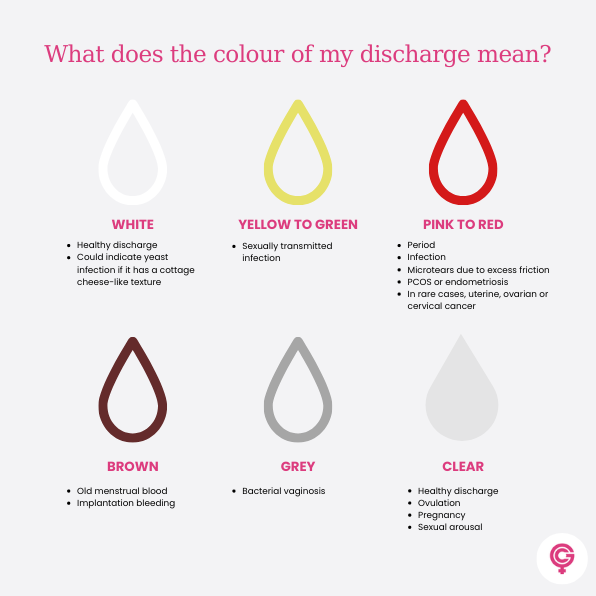It’s totally normal for women to experience some vaginal discharge – most do. And while it’s not glamourous, it fulfils an important function in guarding against infection and keeping your vagina moist and clean.
In almost all cases vaginal discharge is healthy and nothing to worry about. However there are a few things to look out for which could signal a problem. Here we break it down.
What does my discharge tell me?
Vaginal discharge is usually no cause for concern, providing it:
- Is white or clear
- Is sticky and thick
- Does not have a pungent or unpleasant odour
- Is slick and wet
Healthy vaginal discharge can fluctuate and change. For example if you’re pregnant, on birth control or having sex, your vaginal discharge will likely be heavier. During ovulation, discharge is often wet and slippery.
What does creamy white discharge mean?
Creamy white discharge is a common component of a woman’s monthly cycle. For instance, cloudy white discharge is common prior to ovulation, as is sticky discharge.
On the other hand, white discharge could also be a sign of a yeast infection or pregnancy.
If you have a yeast infection such as thrush, the discharge will be white and thick with a cottage-cheese-like consistency, and you may experience other symptoms including itching or a burning feeling in the vaginal region.
In pregnancy, many women experience a milky white discharge known as leukorrhea. On the other hand, pregnant women may be more likely to experience vaginal infections, so if in doubt, see a gynaecologist.
When should I be concerned about discharge?
Dr Albert Aka, Consultant Gynaecologist at The Gynae Centre explains: “If you notice a change in your discharge – for instance in colour, consistency, smell or amount, or if you are experiencing a lot of itching or soreness – it might signal infection. That’s the time to see your GP or gynaecologist.”
For instance:
- Yellow, green or frothy discharge could be a sign of trichomoniasis (an STI that may also cause painful urination, itching and an unpleasant-smelling discharge).
- Fishy-smelling discharge could be a sign of bacterial vaginosis.
- Discharge with bleeding or pain in the pelvic area could be a sign of gonorrhoea or chlamydia, or in much rarer cases cervical or ovarian cancer.
- Pink, brown, or bloody discharge with a pungent odour could be a sign of cervical cancer and you should see your GP or a gynaecologist as soon as possible to get it checked.
- Thick white discharge with a cottage-cheese-like consistency could be a sign of a yeast infection.
Vaginal discharge colour guide
Not sure? Here’s a quick-reference vaginal discharge colour guide. But remember, if in doubt, always see a doctor.

Most vaginal discharge is normal and no cause for concern. If in doubt though, you can book a video consultation with one of our gynaecologists today.
Here at The Gynae Centre, our expert gynaecologists are among the best in the field. To get the clarity and reassurance you need, book a consultation online.






